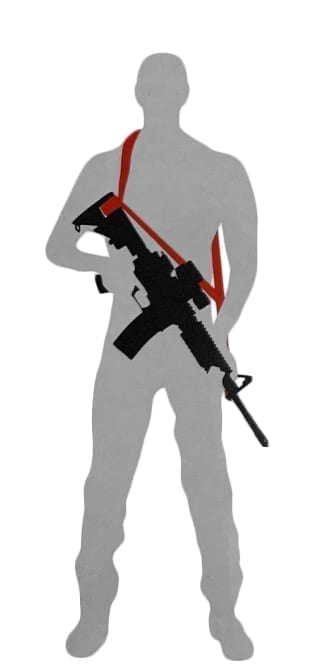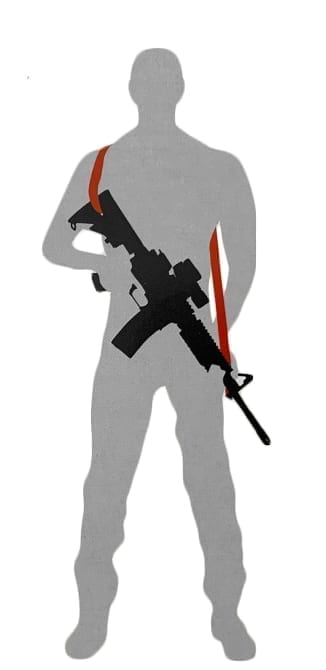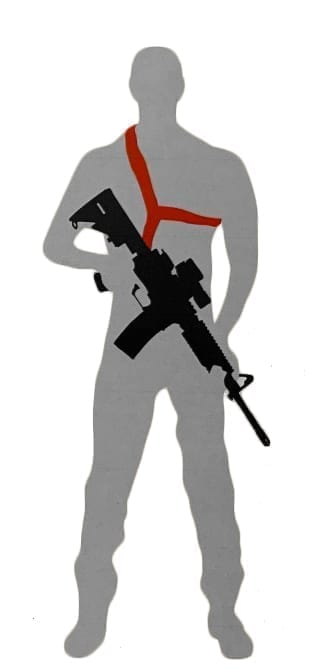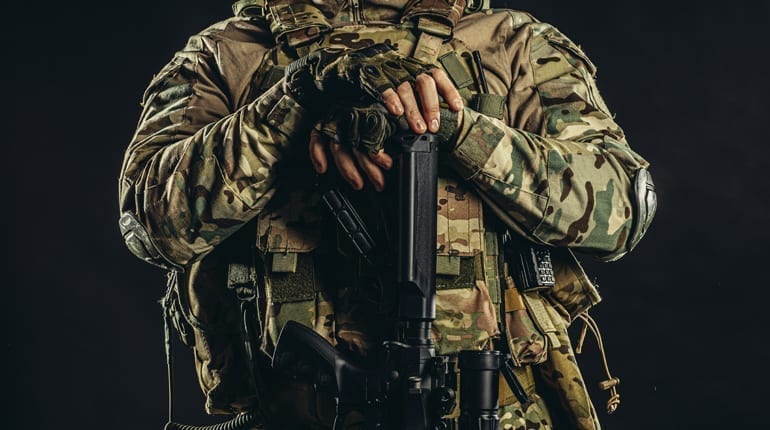Before we look at how to fit a gun sling to your Airsoft Guns, let’s look at the many different sling types there are. The choice can be daunting if you don’t know the difference between a single point, two-point and even three-point Gun Slings. Also whether you should look at standard slings or ones that incorporate bungee and what benefit it may offer. You may also be influenced by your budget, what’s hot in the real world or what you have seen in your favourite first-person shooter game.
Slings serve three essential purposes; they stabilise your rifle, securely retain it close to your body when not needed and they take the weight. The beauty of a two-point sling is that you will already have multiple attachment points that exist on your rifle to attach it. Some players will insist on attaching their sling using QD sling mounts. These may not be supplied with your rifle, but don’t worry they are supplied with some top-end slings or sold separately on the JBBG website. Many players also just use the factory attachment points and look and operate the sling in the same way. No matter how many weapons you have on your person at any given time, a sling can be invaluable.
SLING IT!
Some of the following gun sling information was taken from Airsoft International, the only airsoft magazine!
THREE-POINT SLING
The most complex type of sling readily available is known as a three-point sling, connected to your weapon at two points and looped around the wearer’s torso, forming a third point. A three-point sling puts most emphasis on security and weight-distribution, making it the ideal choice for heavy or cumbersome weapons that you need to support for a long period. Three-point slings achieve this by sacrificing speed, as the supporting webbing can often snag, obscure or obstruct your equipment and even your weapon’s control. A three-point sling functions more like a harness and is therefore strapped to the shooter. This allows the user to release the weapon to use there hands for other tasks without fear of dropping it on the ground since it will remain hanging from the shooter.

TWO-POINT SLING
Two-point slings are also great for distributing the weight of the weapon but offer a balance shifted slightly more towards speed, at the cost of a little security. A two-point sling is perhaps the simplest design, simply attaching to either end of the gun a bit like a handbag strap. Whilst they are less restricting than a three-point sling, they don’t offer the option of simply dropping the weapon and allowing it to hang as often the straps will slide or bounce off of your shoulder. Users will still have to consider the strap blocking access to equipment and when the weapon is not slung, the possibility of snagging or catching the sling is always present. Two-point slings are most often used on longer rifles and can usually be easily and quickly shortened or lengthened (via a pull tab or cord) to suit your shooting style or needs.

ONE-POINT SLING
A single-point sling offers the fastest option with reasonable security but arguably the poorest weight distribution. Comprising of a simple loop, a single-point sling attaches to just one point of the weapon, usually towards the back of the receiver. It allows the user to manoeuvre and fire the weapon from either shoulder and when required to do so, you can simply drop the weapon and allow it to hang at the ready. The downside is that weight of the weapon tends to hang from one point, usually one shoulder, around your neck – this can lead to back and neck pain/strain if used for long periods or with heavy weapons. Because of the way they work, single-point slings are often paired with short-barreled rifles or submachine guns. We tend to use them with shorter weapons such as MP7 or MP5 guns.


